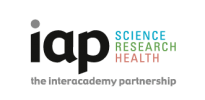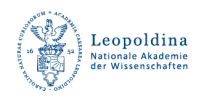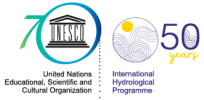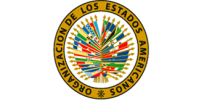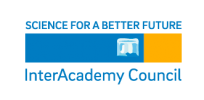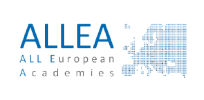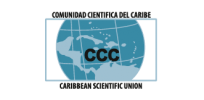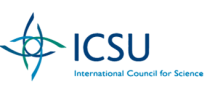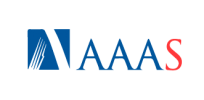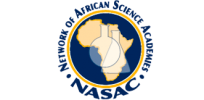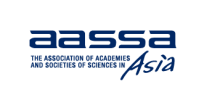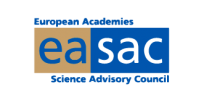Conceptual Framework of the IANAS Science Education Program
I- The generation of the Programme
1. Background
Science education is the most important way through which national societies of all countries learn about science, its values, concepts and objectives, and through which they can understand the importance of scientific endeavor for their cultural and socioeconomic development. It is a source of concern that in the present age of an unparalleled velocity of scientific discovery, science education of our children at the primary and secondary levels is generally inadequate. The curricula and the methods used in most schools of the hemisphere and of the world do not convey the fascination of scientific research and do not transmit the values and approaches that make science relevant to everyday life and to responsible citizenship.
This pressing need to improve science education at all levels has been identified by the most prestigious international scientific networks such as the InterAcademy Panel (IAP), the International Council for Science (ICSU) and the InterAcademy Council (IAC). In the Americas, National Academies have joined other institutions to generate active Programmes in Inquiry-Based Science Education (IBSE) projects. For example, the US National Academies of Sciences and the Smithsonian Institution have jointly developed the National Science Resource Center that has generated IBSE projects that cover approximately 25% of the school children of that country. In Mexico, the Mexico-US Foundation, with the active participation of the Mexican Academy, has promoted a similar project that is now being implemented in several States of that country. In Chile, the Chilean Academy of Sciences and the Ministry of Education have launched a Pilot IBSE Project that is being implemented in some of the poorest municipalities of the Metropolitan Area of Santiago. This project has received much support from the U.S., Mexico, and French Academy projects. The Academies of several other countries, among which Brazil, Cuba, Colombia and Argentina, also have initiatives in this area.
2. The Proposal
The original proposal was generated by the Chilean Academy of Sciences and circulated to all IANAS Academies and subsequently discussed in the IANAS General Assembly meeting held in Santiago May 5-7, 2004.
The discussion added some important ideas and activities that allowed the preparation of a revised version that was formally approved by the IANAS General Assembly. This revised version is presented in the following text.
II- Programme Objectives
It is proposed that IANAS generates a Hemispheric Programme on Science Education for a 5 year period.
The general objective of this programme is to improve the level and the relevance of science education in the hemisphere through the active participation of Science Academies and the most prominent scientists in the nations of the Americas working together with teachers and educational authorities.
The specific objectives are:
1- To promote collaboration and synergism in the implementation of science education projects sponsored by Science Academies in the countries of the Americas;
2- To stimulate the sharing of materials and experiences among projects dedicated to Inquiry-Based Science Education (IBSE);
3- To generate common methods, mechanisms and guidelines to evaluate the progress of the individual projects;
4- To create a forum for the discussion of the optimal materials and methods that should be used in science education;
5- To stimulate collaboration among Academies in the organization of science fairs, scientific Olympics and science prizes to children.
Focus . The initial main focus of the programme will be on elementary level science education. However worthwhile activities on secondary and tertiary science education will be considered.
III- Activities of the Programme
1) Exchange of science education materials .
The programme will encourage the exchange of education materials financing the purchase and shipment of prototype materials (modules, kits) from one country to another. It will also encourage the exchange of written teacher and student guides, text-books, CDs, etc.
The participating Academies that have intellectual property ownership of some of these materials are encouraged to freely license or waive payment for their use by other member of IANAS.
2) Interamerican Courses and Workshops for teacher training
These courses should provide openings to qualified applicants from other countries of the Americas in addition to the host country. These courses should in general include theoretical as well as practical activities and should last a minimum of one week. These courses should provide fellowships to the foreign selected participants and ideally should include lecturers and professors from several countries in the hemisphere.
3) Interamerican Strategic Planning Workshops
These workshop modeled after the LASER K12 Strategic Planning Institutes organized by the Smithsonian Institution – NRC in the United States, are designated to prepare multidisciplinary teams from countries, states or educational districts who are planning to introduce IBSE-projects in their schools. These week-long workshops provide these multidisciplinary teams with an in depth exposure to the collective experience of leaders of successful projects that have been implemented.
These workshops will be open to teams who originate from different countries of the Americas and will use experts also from several countries where these projects are being executed. These workshops will provide partial fellowships to the foreign multidisciplinary teams that are participating and may also provide prototype materials to their participants.
4) Interamerican short-term fellowships on science education
A limited number of fellowships will be provided for science teachers or scientists to visit other countries to learn specific aspects of science education methods. These fellowships which may last from a minimum of two weeks to a maximum of 3 months will provide for economy class air travel and partial coverage of living expenses during the fellowship. The sending and receiving institutions are expected to cover the remaining expenses.
Candidates will be selected in a competitive call on the basis of their CVs, the value of their proposed training and geographic distribution.
5) Visiting Interamerican Science Education Experts
IANAS members can request funds to cover the travel and living expenses of experts from another country of the Americas who will participate in a bona fide activity of science education in the host country. Stays from 3-15 days can be covered by this activity.
6) Joint Evaluation Initiatives
One of the most challenging aspects of IBSE projects is to obtain a valid evaluation of the achievement of their original goals. It is, therefore, advisable to attempt to generate mechanisms that can serve to assess these projects at the international level. Recently (Jan. 22-23, 2004) in Santiago, Chile, an International Workshop extensively discussed this problem and its complication and recommended the establishment of an international project to generate such a mechanism (Annex 1).
In addition to the generation of such an international mechanism, it seems pertinent to support research projects that study different aspects of evaluation. These projects would be supported by the IANAS Project only in their international components.
7) Interamerican Forum on Science Education
This Forum would promote interest and discussion about science education and about new methods and approaches in this field. This Forum would have two parts:
a) An Internet Discussion Group that would serve as an open space for a free exchange of ideas, opinion and new concepts. Linked to this portal, there should be relevant data banks on science education materials, results, evaluations as well as question and answer corners for teachers and students. This IANAS electronic communication medium should be linked to all major related portals (IAP, IAP/ICSU, Main à la Pâte, Portal of the Americas).
b) An Annual Conference on Science Education that would rotate in different countries of the hemisphere. These conferences would serve the purpose of focusing the attention of social and political leaders on the importance of this topic as well as on the urgency to support Academy initiatives to improve the level of science education in our countries.
8) Science fairs, scientific Olympics and prizes for children that excel in science are mechanisms that greatly stimulate their interest in science. Science Academies should participate in these activities and should try to make these events regional by promoting participation of children and scientists from other countries in the Americas.
IV- Structure of the IANAS Programme on Science Education
IANAS Academies will decide freely to participate in this Programme.
• One Representative or Focal Point from each participating Academy will conform the Hemispheric Council for the IANAS Science Education Programme. Two Co-Chairs elected by the IANAS Executive Committee, will represent the Program.
• Each participating Academy will generate a National Committee for the IANAS Programme. These National Committees should include educators and scientists with expertise in the different disciplines involved in science education and should serve as a nexus with the national authorities with responsibility in science education (Ministers of Education, Science Councils, etc ). The National Committees have the responsibility to generate the initiatives that the Academy of their country will propose and to disseminate the other activities of the programme to insure the participation of the appropriate persons and institutions of that country.
V- Financing
Policy
All the activities sponsored by the IANAS Programme for Science Education (IANAS-PSE) should receive significant funding from the host Academy or other national institutions in the host country.
The IANAS-PSE will provide funds that will primarily cover costs for international participation. The funds for the support of these activities will be obtained from grants and direct contributions given to IANAS by national or international public or private institutions.
VI- Itinerary 2004
June 15 Appointment of the representatives of the Academies that will participate in the IANAS-PSE.
August 1 Initial activities are circulated for approval and fund raising.
August-October Fund raising efforts by the IANAS Executive Committee and IAP.
October-November Meeting of the Programme Council to decide on the Work Plan for the first year.
Elect the Programme Executive Coordinator.
VII- Evaluation
This programme should submit annual reports to the IANAS Executive Board. Half way through its five year period and at its end, the programme should undergo a thorough evaluation that will assess the progress achieved towards its original goals and its efficiency in the attainment of increased collaboration among the Academies in the field of science education. This evaluation would be carried by an Ad Hoc External Committee appointed by the IANAS Executive Board.

